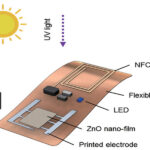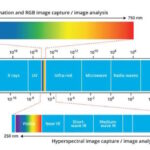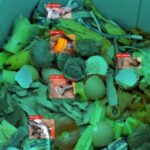Hollow core fiber (HCF) optical sensors are used in applications including Li-ion battery research and development (R&D), robotic arms, civil engineering infrastructural health monitoring, and biosensing. Some of the attributes of HCF optical sensors are small footprints, non-conductance, chemical stability, and high dynamic ranges.
In the case of activities like Li-ion R&D, HCFs can be used to implement real-time Raman spectroscopy to provide a structural fingerprint that can identify and track changes in the electrolyte molecular structure as the cell is charged and discharged. The method repeatedly extracts a sub-microliter (sub-µL) sample of electrolyte from a working Li-ion battery. The sample is reinfused back into the battery, and another sample is taken. The process continues as long as needed to trace changes in the electrolyte chemistry throughout battery cycling.
The physical setup of the HCF Raman analysis is shown in Figure 1. In the figure, a continuous wave of 785 nm laser light is filtered and sent into the core of a single-ring HCF on the left side of (a). The lefthand HCF face is embedded in a microfluidic chamber with a sapphire window shown in the inset (b). The HCF is connected to a syringe pump shown at the top of (a) for a controlled sampling of the electrolyte. The right end of the HCF is embedded in the cell under study, as shown in (d). The backscattered Raman signal in the HCF reflects off a beamsplitter and is analyzed with a spectrometer. Other optical elements include a bandpass filter (F1) and a notch filter (F2). Inset (c) shows a scanning electron microscope (SEM) image of the HCF with an outer diameter of 174 μm and a core diameter of 36 μm on the left, with the Raman signal detected by the spectrometer CCD camera on the right.

Multispectral biosensing
Common optical biosensors use a single resonance feature in the reflection-transmission-scattering spectra and identify resonant shifts resulting from variations in the analyte refractive index (RI) and its concentration. This type of optical biosensor has the advantage of high sensitivity and a great figure of merit. However, it cannot cost-effectively and quickly provide a detailed fingerprint of complex biosamples or implement real-time monitoring.
To address those needs, in-fiber multispectral optical sensing (IMOS) has been developed for analyzing liquid biosamples in real-time as well. The new sensing technique relies on the detection of spectral shifts of the maxima and minima in the transmission spectrum when a analyte flows through the fiber. The light source is a broadband halogen lamp to provide the needed white light spectrum.
Instead of standard HCFs, hollow-core microstructured optical fibers (HC-MOFs) are used. These fibers enable the sensing of liquid analytes by monitoring the changes in the transmission characteristics. HC-MOFs also carry higher sample volumes for measuring light-analyte interactions, which improves the refractive index sensitivity (RIS).
Resonances occur because of interactions with the HC-MOF capillary wall, and their spectral positions are uniquely related to the bioanalyte Ris enabling exact identification of individual biological fluids and their concentrations. The results are captured using a CCD camera inside the spectrometer.
Measuring curvature and temperature
For simultaneous monitoring of curvature and temperature, hollow core Bragg fiber (HCBF)-based sensors have been developed that are compact, inexpensive, and have high sensitivity and electromagnetic immunity (Figure 2). Applications are expected to include robotic arms, civil engineering infrastructural health monitoring, and monitoring aerospace composite structures.

The four-bilayer Bragg structure generates a transmission spectrum that embodies its cross-sensitivity to temperature and curvature. The four bilayers are used to form a 2×2 matrix that enables demodulation of the temperature/curvature cross sensitivity based on specific resonant dip intensities.
Summary
HCF optical sensors are a highly versatile technology. In addition to basic HCFs, HC-MOFs, and multi-layer HC Bragg fibers have been developed for specific measurement functions in biological and structural monitoring.
References
Fabricating Air Pressure Sensors in Hollow-Core Fiber Using Femtosecond Laser Pulse, MDPI micromachines
Hollow Core Bragg Fiber-Based Sensor for Simultaneous Measurement of Curvature and Temperature, MDPI sensors
Hollow-Core Fiber-Tip Interferometric High-Temperature Sensor Operating at 1100 °C with High Linearity, MDPI micromachines
Hollow-core optical fibre sensors for operando Raman spectroscopy investigation of Li-ion battery liquid electrolytes, Nature Communications
Multispectral sensing of biological liquids with hollow-core microstructured optical fibres, Light Science and Applications





